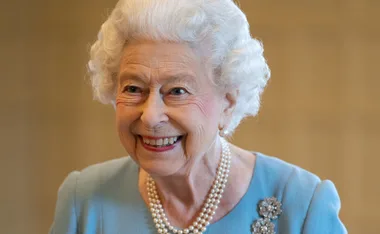Queen Elizabeth II has tested positive for COVID-19 just days after her son Prince Charles and daughter-in-law Camilla, Duchess of Cornwall also contracted the virus.
Buckingham Palace confirmed the news after speculation surrounding the 95-year-old monarch’s health, noting that she has been experiencing mild, cold-like symptoms.
“She will continue to receive medical attention and will follow all appropriate guidelines,” the palace said.
Her Majesty is believed to have had three doses of the COVID-19 vaccine and has spent much of the pandemic in isolation to reduce the risk of contracting the virus.

Queen Elizabeth II has tested positive for COVID-19 almost two years into the pandemic.
(Image: Getty)However, it was reported that Charles met with his mother just days before he tested positive earlier this month, sparking speculation that he may have passed it on to her.
Buckingham Palace has not addressed claims that the future King may have exposed his mother to the virus, though Her Majesty notably carried out many of her royal engagements virtually following news that he had tested positive.
It’s understood that the Queen will now spend five days in isolation, in keeping with current COVID-19 regulations in the UK.
She may then return to virtual royal duties in a bid to prevent exposure to any other illnesses, as they could prove more dangerous if COVID-19 weakens her immune system.
Though it’s unlikely her diagnosis will affect her upcoming Platinum Jubilee celebrations, the virus is notoriously hard on older patients and the public will have to watch for key health updates from Buckingham Palace.
This is the Queen’s first time testing positive for the virus, though other royals including Charles and Prince William have experienced it before.
At 95-years-old, there are greater concerns for the Queen, as she falls into a high-risk age range that have been found more likely to develop complications from the illness.
WATCH: The Queen looking frail after health scares over the last six months. Story continues after video.
It doesn’t help that Her Majesty’s health has been at the forefront of many royal watchers’ minds for months now.
In October 2020 she was hospitalised overnight for an unspecified health concern, which saw doctors advise her to cut back on royal duties and rest at Windsor Castle for several weeks.
Though the Queen has since returned to “light” royal duties, she has also been photographed using a cane – believed to have once belonged to late husband Prince Philip – and struggling with her mobility.
At a rare face-to-face engagement last week she confessed, “Well, as you can see I can’t move.”

It is believed that Prince Charles may have exposed his mother to the virus.
(Image: Getty)Though this year marks her historic Platinum Jubilee after 70 years on the throne, it has become clear that the ageing monarch is slowing down in the later years of her reign.
She has passed many duties over to her heir apparent, Charles, and grandson William and has been forced to cancel other appearances for her health.
After losing her husband of 73 years, the Duke of Edinburgh, in April last year, the Queen has managed to keep calm and carry on for almost 12 months.
But with the sad anniversary of his passing on the horizon and now this COVID-19 diagnosis, Her Majesty has some difficult weeks ahead.




